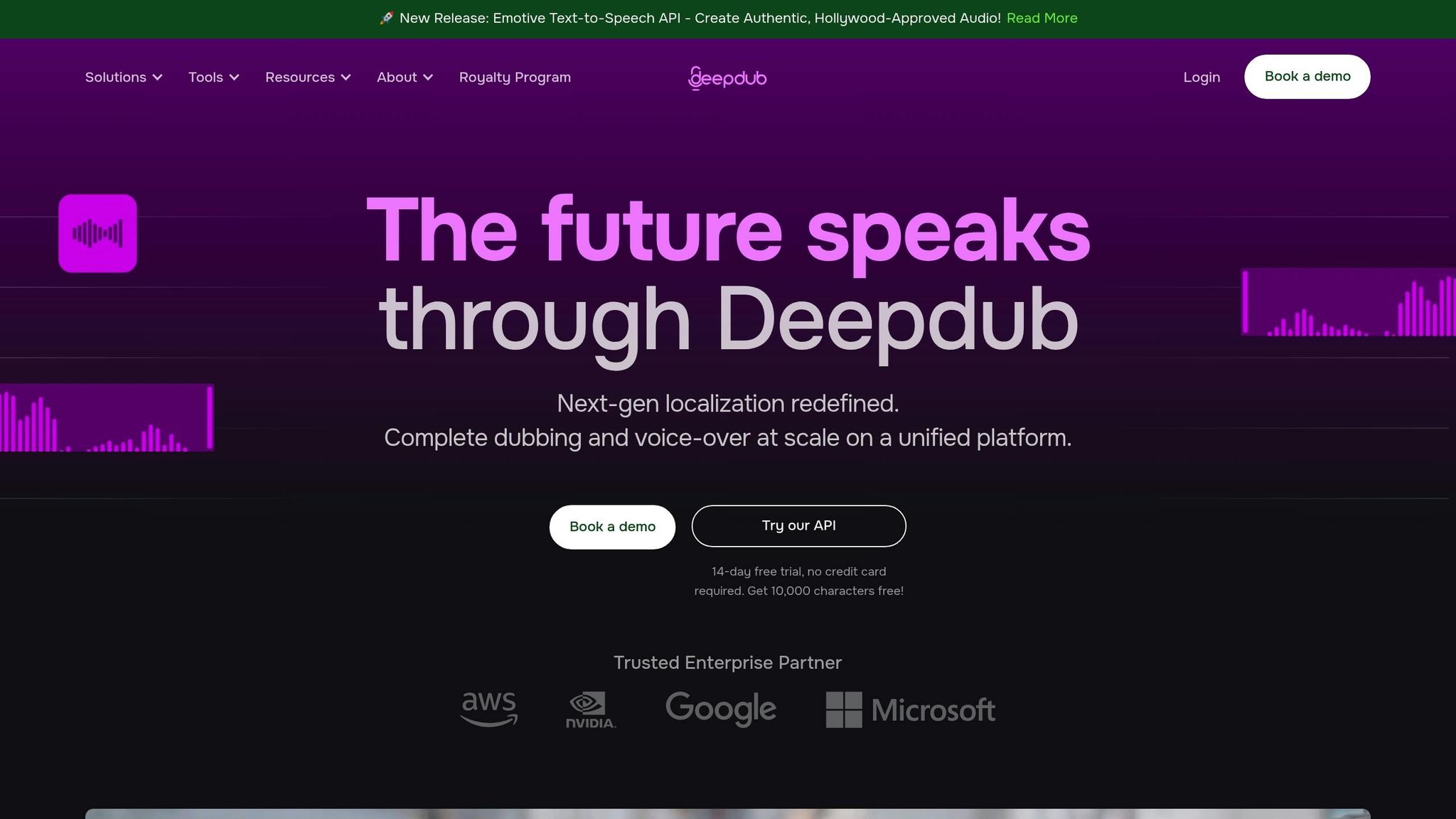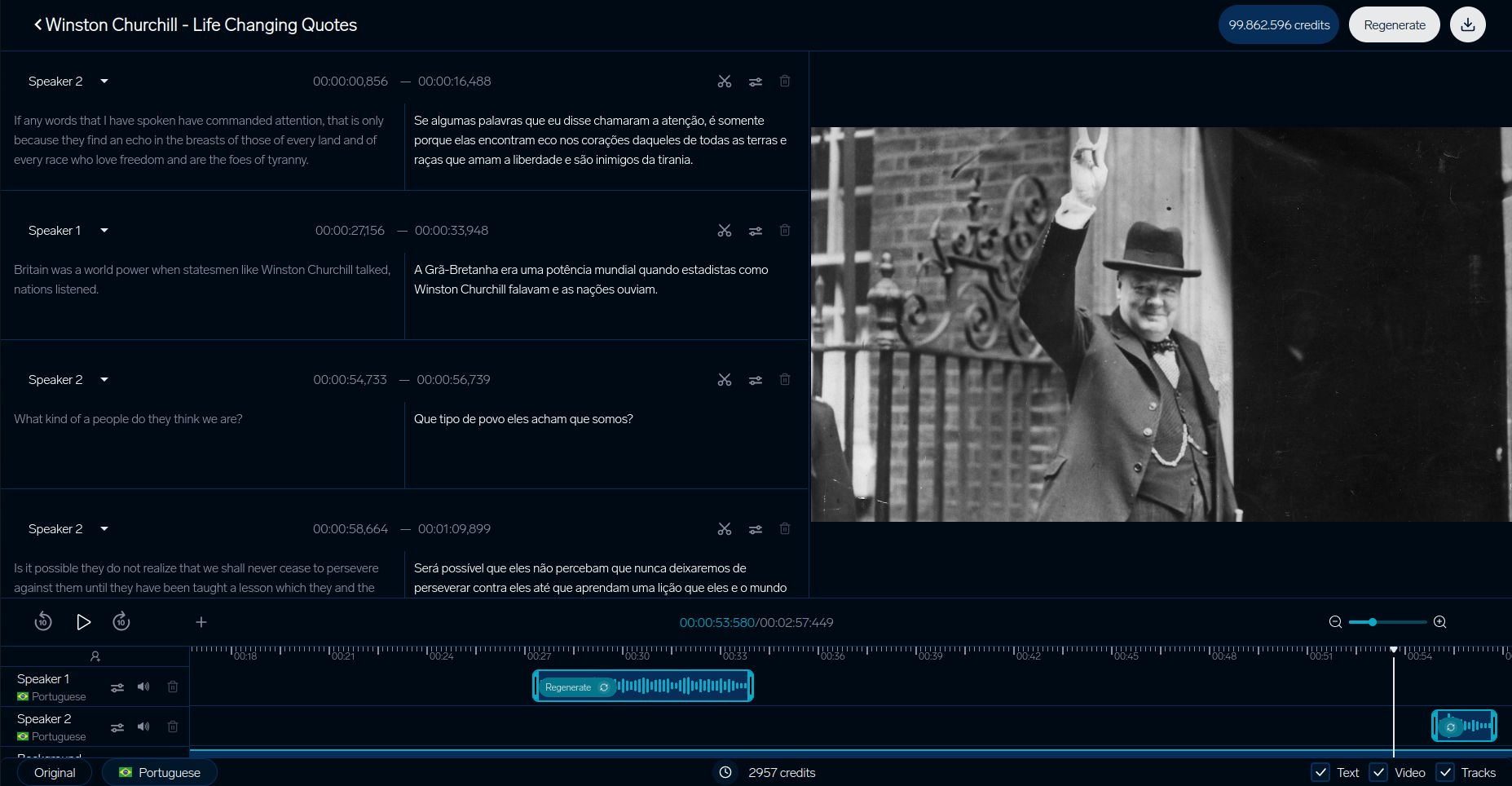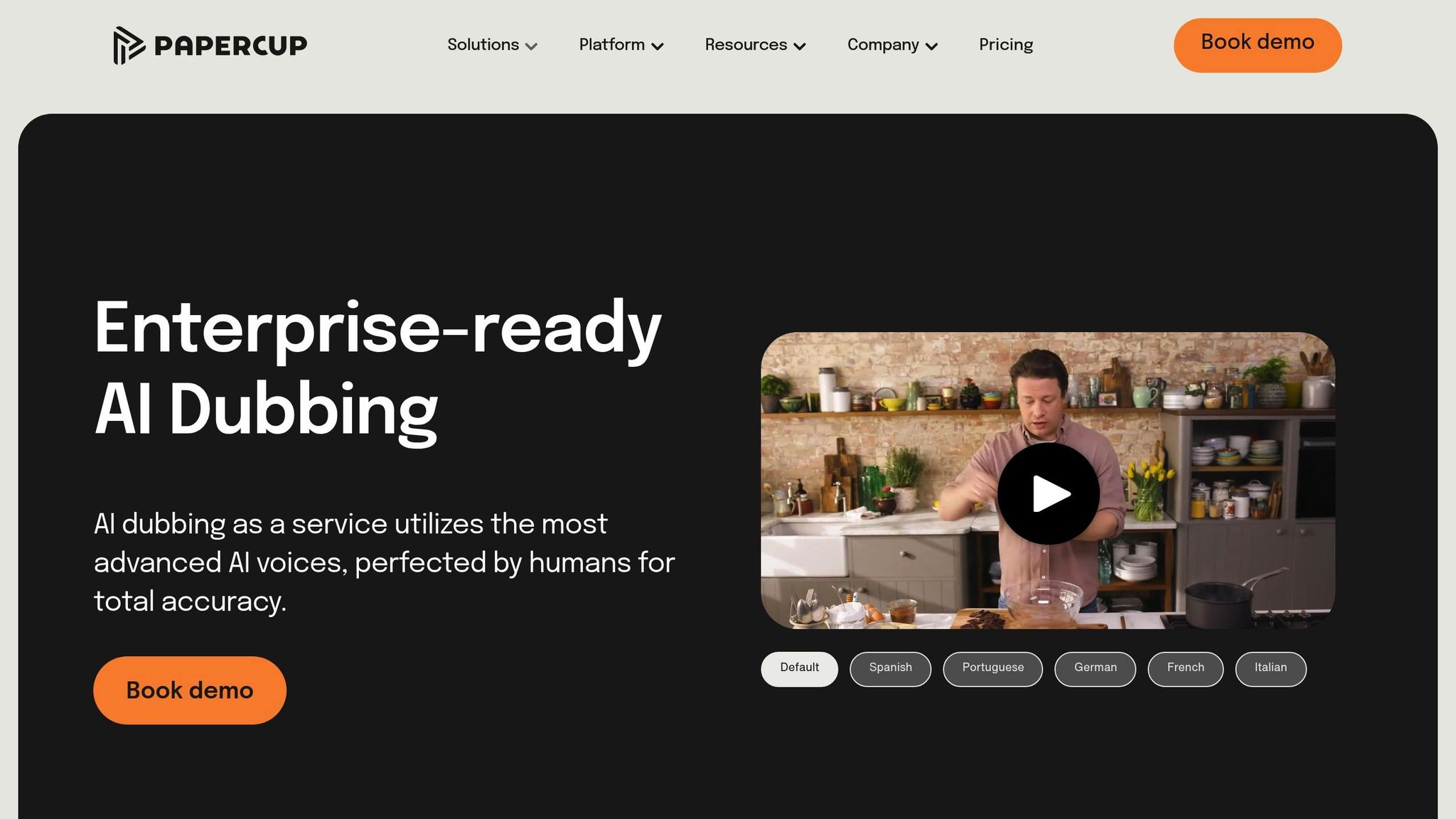Top AI Dubbing Tools for 2025
AI dubbing tools in 2025 are transforming how creators and businesses localize content for global audiences. These tools combine speech recognition, translation, voice synthesis, and even lip-syncing to deliver natural-sounding multilingual voiceovers. Whether you're a content creator, media producer, or educator, AI dubbing can save time and reduce costs while maintaining quality. Here's what you need to know:
-
Key Features to Look For:
- Language Support: Tools like Rask AI support up to 135 languages, while others like ElevenLabs focus on fewer but high-quality options.
- Voice Cloning: Platforms such as CAMB.AI and ElevenLabs replicate voices with minimal input, adding personalization and consistency.
- Integration: Look for tools compatible with video editing software or offering API access for seamless workflows.
- Pricing: Options range from free tiers (like DubSmart) to enterprise-level solutions with custom quotes.
-
Top Tools:
- DeepDub: Advanced emotional voice synthesis in 130+ languages.
- DubSmart: Affordable plans with voice cloning and 4K video support.
- Papercup: Ideal for media and e-learning with high audience satisfaction.
- Resemble AI: Developer-friendly API for custom integrations.
Quick Comparison
| Feature | DeepDub | DubSmart | Papercup | Resemble AI |
|---|---|---|---|---|
| Languages | 130+ | 33 | Custom | Custom |
| Voice Cloning | Yes (eTTS) | Yes | No | Yes (API) |
| Starting Price | Custom quote | Free tier | Custom quote | Custom quote |
| Best For | Media | Creators | E-learning | Developers |
AI dubbing is helping creators overcome language barriers while keeping content authentic. Choose the tool that fits your needs based on language options, voice quality, integration, and budget.
Must-Have Features in AI Dubbing Tools
Language Support and Translation Quality
AI dubbing tools differ widely in the number of languages they support. The best tools ensure translations are accurate, capturing both the meaning and the context of the original content. As Synthesia explains:
"The AI maintains the original tone and intention, ensuring clarity and context are preserved".
| Platform | Languages Supported | Key Features |
|---|---|---|
| Rask AI | 135 | Wide language coverage |
| Veed | 100+ | Advanced dubbing tools |
| Kapwing | 70+ | Dubbing integrated with subtitles |
| ElevenLabs | 29 | High-quality voice synthesis |
Now, let’s explore how voice cloning adds another layer of personalization to AI dubbing.
Voice Cloning Options
Voice cloning takes dubbing a step further by replicating the speaker's voice, keeping their identity intact across languages. For instance, CAMB.AI's MARS AI Model can create a convincing voice clone with just 2–3 seconds of audio. This is especially useful for long-term projects where consistency is key.
A notable example is Paramount+, which used this technology to recreate Wilt Chamberlain's voice for the Goliath documentary. ElevenLabs also offers over 5,000 voice options in 32 languages, giving creators a lot of flexibility. These tools now allow for:
- Adapting voices to regional accents and dialects
- Modifying voices to appear younger or older
When paired with seamless software integration, these features greatly enhance production workflows.
User Interface and Software Integration
A good AI dubbing tool should integrate easily with professional video editing software like Final Cut Pro, DaVinci Resolve, and Adobe Premiere. This ensures a smooth workflow for production teams.
Platforms like Maestra simplify collaboration by enabling direct access to YouTube content, removing the hassle of manual uploads. Developers can even use API access to embed AI dubbing features into their own systems.
Key export options to look for include:
- MP4/MP3 file export
- SRT caption file creation
- Real-time collaboration tools
- Compatibility across different platforms
Best AI Dubbing Tools in 2025
DeepDub

DeepDub uses its eTTS™ technology to provide dubbing in over 100 languages, offering 26 emotional variations and transcription in more than 130 languages. Its terminological glossaries ensure translation consistency, while its voice-to-voice technology generates various voice options using a limited number of voice artists. According to DeepDub:
"Our unique eTTS™ technology delivers natural voiceovers for any production."
DubSmart

DubSmart offers dubbing in 33 languages with over 30 preset voices. Pricing starts with a free tier, followed by the Standard plan at $49.90/month (150 minutes, with rollover) and the Enterprise plan at $249.90/month (1,000 minutes, supporting 4K video). Key features include:
- Voice cloning for accurate replication
- Support for 4K video (Enterprise plan)
- Subtitle creation in over 70 languages
- Automated speech-to-text transcription
Papercup

Papercup focuses on video translation and AI voice generation, primarily serving media companies and e-learning providers. Its technology excels at maintaining the original speaker's authenticity while adapting to different languages and cultural contexts.
Resemble AI

Resemble AI is well-regarded for its developer-friendly platform, offering API access and tailored business solutions. It’s a strong choice for companies needing technical integrations.
| Platform | Standout Feature | Best For |
|---|---|---|
| DeepDub | 26 emotional variations in 100+ languages | Large media productions |
| DubSmart | Flexible pricing with rollover minutes | Small to medium content creators |
| Papercup | E-learning focus | Educational content |
| Resemble AI | Developer API access | Technical integrations |
sbb-itb-f4517a0
AI Dubbing Tools Side-by-Side
When picking an AI dubbing tool, it’s important to compare features and pricing to find the right fit for your needs. We’ve analyzed the top platforms and highlighted differences in language options, voice features, and pricing structures. Here’s a breakdown to help you decide.
Feature and Price Comparison
Here’s how the platforms stack up:
| Feature | DeepDub | DubSmart | Papercup | Resemble AI |
|---|---|---|---|---|
| Languages | 130+ | 33 | Custom | Custom |
| Voice Cloning | Advanced with eTTS | Yes, any voice | No | Developer API |
| Human Review | Native-speaking adapters | No | Professional translators | Optional |
| Starting Price | Custom quote | Free tier, $19.90/month | Custom quote | Custom quote |
| Best For | Enterprise media | Content creators | Media | Developers |
| Unique Strength | Advanced emotional TTS | Minute rollover | 96% audience satisfaction | API flexibility |
DeepDub stands out for its wide language support and emotional voice capabilities. Their eTTS technology, paired with native-speaking adapters, ensures high-quality outputs across supported languages.
DubSmart offers a free tier and flexible pricing, scaling up to $249.90/month. It includes features like 4K video support for professional projects.
Papercup has gained traction with impressive results - its dubbed videos have over 1 billion views and a 96% audience satisfaction rate.
Aside from features and pricing, how these tools integrate into workflows is another key consideration.
Integration Capabilities Overview
| Platform | Integration Capabilities |
|---|---|
| DeepDub | Easily integrates into post-production workflows |
| DubSmart | YouTube integration with 1080p support |
| Papercup | Not specified |
| Resemble AI | Developer API for custom integrations |
"Deepdub is an AI-based platform offering end-to-end dubbing and voiceover services that integrate seamlessly into the post-production process, enhancing content localization for the media and entertainment industry." - Deepdub FAQs
Conclusion
AI dubbing is reshaping how content is localized, making it easier than ever to reach global audiences.
Different tools cater to different needs. DeepDub stands out for enterprise media solutions, while DubSmart offers user-friendly options for content creators. Papercup focuses on broadcast-level quality for professional productions. These platforms address the growing demands of localization in unique ways, offering tailored solutions for diverse use cases.
The next step for AI dubbing lies in combining accurate voice replication with cultural sensitivity. As Deepdub's CEO explains:
"Audiences crave genuine experiences, and our Accent Control technology marks a significant milestone in achieving that. It reflects our commitment to breaking down language barriers while preserving the cultural essence of content. This innovation not only enhances the viewing experience but also underscores our leadership in AI-driven localization solutions."
When choosing an AI dubbing platform, it's important to weigh factors like language options, translation precision, voice cloning features, workflow compatibility, budget, and available technical support. While AI dubbing doesn’t replace traditional voice acting, it expands localization possibilities. With AI-driven tools expected to contribute nearly one-third of the projected $47 billion global translation service revenue, they are now a key part of efficient global content strategies.
